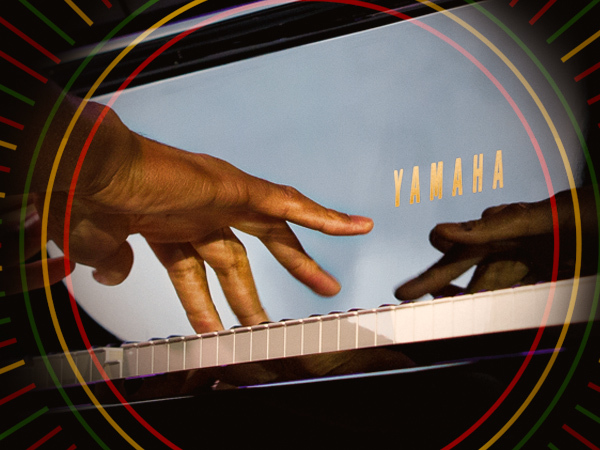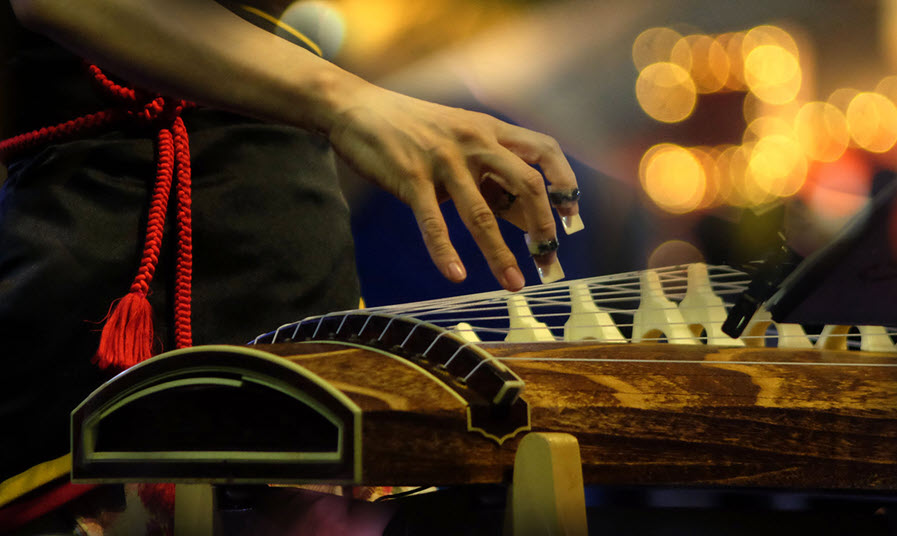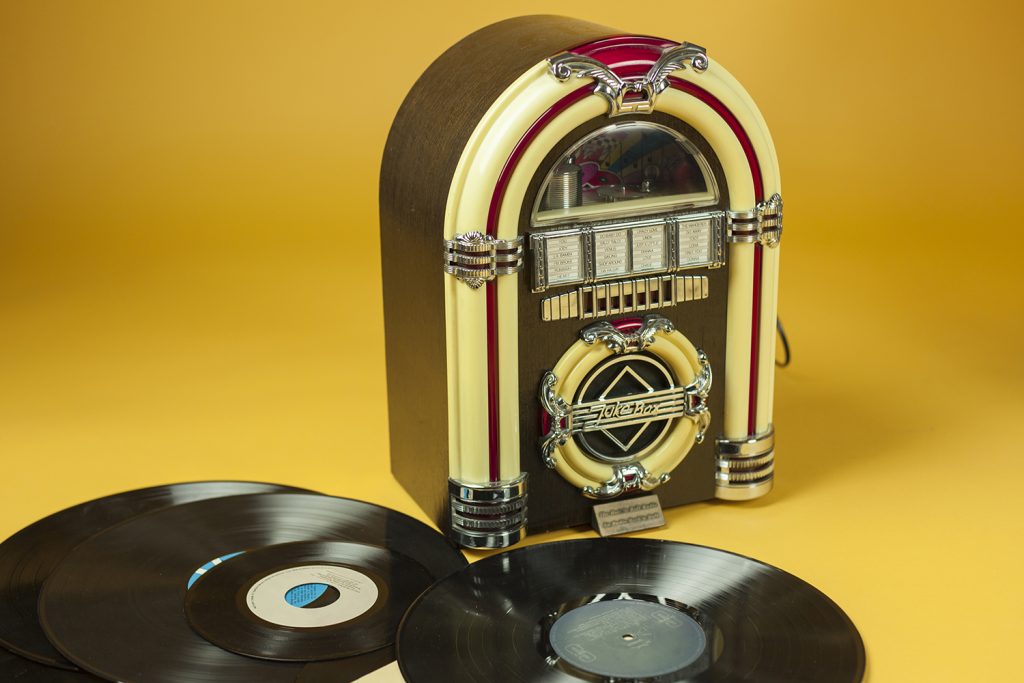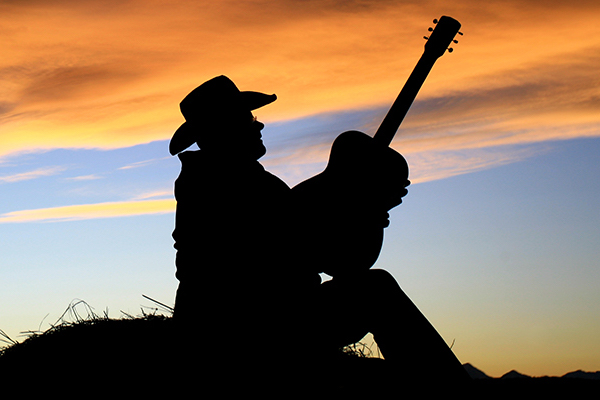The History of Musical Genres, Part 6: Rap and Hip-Hop
When poetry jumped on the beat.
The terms rap and hip-hop are often used interchangeably to refer to the music alone, but hip-hop encompasses a larger cultural aesthetic that includes DJing, MCing, break-dancing and graffiti art as well. The difference between these terms is best expressed by New York rapper KRS-One on his 2018 single “Hip Hop vs Rap,” where he explains that rapping is a skill, but hip-hop is a lifestyle.
In this final installment of our “History of Musical Genres” series, we’ll take a look at the rise of both, exploring their cultural and musical significance, as well as highlighting some of the key players in the vibrant rap and hip-hop scene.
Early Practitioners
Rap music began to develop organically in the late 1970s and early ’80s, thanks largely to the creative efforts of three Bronx DJs: Grand Master Flash, DJ Kool Herc and Afrika Bambaataa. Perhaps not coincidentally, it was during this period that turntables became instruments through the technique of “scratching,” where DJs dropped a needle onto vinyl records and then moved them back and forth manually to create percussive sounds. By playing two turntables with the same record, so-called breakbeats could be extended to give MCs time to rhyme without getting in the way of the song’s vocals. “I’m actually readjusting time,” Flash explained in a 2016 story in the New York Times. “I’m taking this break, it’s 10 seconds, I’m making it 10 minutes [and] you don’t know when it’s beginning or ending.”
The first rap song is thought to be the 1979 release of “Kim Tim III (Personality Jock)” by The Fatback Band, but the track served as the B-side of a R&B tune and consequently never garnered much attention. It wasn’t until the Sugarhill Gang’s release of “Rapper’s Delight” later that year that rap music was thrust into the public consciousness. Before this, early rap artists couldn’t envision how their live shows could be condensed to 3 minutes, the average length of a pop record.
When the original 12-inch version of “Rapper’s Delight” hit the airwaves, it defied radio norms, coming in at 15 minutes long. “And yet, Black radio started playing it,” writes Elizabeth Blair in a 2000 story on NPR. “So much so that the Sugarhill Gang recorded a seven-minute version for pop stations and introduced the Black neighborhood sound of the 1970s to white listeners.” Adds journalist Harry Allen in that same article, “‘Rapper’s Delight’ was kind of like the thing that said, ‘This is how we’re going to do it.’ And then everyone else said, ‘Oh, I get it.’”
The other gamechanger, “Planet Rock,” by Afrika Bambaataa & the Soulsonic Force, was a gift to partygoers and break-dancers everywhere. The song was clearly electronica, but with hip-hop sensibilities. Released in 1982, it was a mashup of the Kraftwerk tracks “Trans-Europe Express” and “Numbers,” enhanced by synth stabs and robotic MC chants. More importantly, it was the song that brought drum machine beats to hip-hop. In a Rolling Stone list of the 50 Greatest Hip-Hop Songs of All Time, Chuck D of Public Enemy says, “‘Planet Rock’ is as important as Willie Mitchell or Booker T were to the Memphis scene. There hasn’t been a song like it in hip-hop since.”
Throughout the heyday of rap, hip-hop was largely a performance art experienced at parties that lasted for hours. Yet as the decade progressed, it became apparent that the fledgling genre had more to offer than party rhymes and dance beats. The epic song “The Message” by Grandmaster Flash and the Furious Five delivered a vivid picture of the struggles endured by many living in inner-city neighborhoods across America: incivility, poverty, homelessness and hopelessness. Though the group was reportedly initially reluctant to record the tune because it wasn’t a party song, it had an immediate impact. “The world (me included) absolutely froze in its tracks in the week it debuted on radio in June of ’82,” said The Roots drummer Questlove in Rolling Stone. “Hip-hop was known as party fodder, a fad. ‘The Message’ pulled a 180 and proved it could be a tool of sociopolitical change.”
Channeling the spirit of director Spike Lee’s film “Do the Right Thing,” the work of the rap group Public Enemy doesn’t simply describe the condition of disenfranchised people, it urges the listener to confront the maladies head on. Their 1989 release “Fight the Power” was written specifically at Lee’s request and is a call to action. “I wanted it to be defiant, I wanted it to be angry, I wanted it to be rhythmic,” said Lee in a 2020 article in Medium. “I thought right away of Public Enemy.”
Contemporary Rap / Hip-Hop Artists
Other standout artists who have been pivotal to the development of rap and hip-hop include Jay Z (born Sean Carter), who has been a dominant and creative force in popular music for decades, as well as one of the greatest MCs to ever hold a microphone. He’s also a prolific songwriter known both for his solo projects and collaborations with artists like Rihanna, Mariah Carey, Pharrell Williams, and his wife, Beyoncé. The Brooklyn native was also the first rapper inducted into the Songwriters Hall of Fame. He saw his selection as both a personal victory and an accolade for all hip-hop artists, tweeting: “This is a win for US. I remember when rap was said to be a fad. We are now alongside some of the greatest writers in history.”
Missy Elliott was the first female hip-hop artist to be inducted into the Hall of Fame. Elliott was recognized for her six studio albums and songs such as “Get Ur Freak On” and “Work It.” She was also lauded for her songwriting chops in service to other popular artists such as Whitney Houston, Aaliyah, Mary J. Blige and Ciara.
Christopher Wallace, who recorded as The Notorious B.I.G., sounded as if an asthma attack was imminent before every verse. And that was the genius of his delivery. “Biggie’s voice doesn’t sound like anybody else’s,” wrote Frannie Kelly in a 2010 story for NPR. “It’s plummy, wheezy, humid. It sounds like it comes from deeper in his chest than other people’s voices.” Wallace, who also went by the monikers Biggie Smalls and Biggie, was taught diction and phrasing by jazz saxophonist Donald Harrison. “We worked on various tonguing and speed and agility,” Harrison recalls. “You have to slow things down really slow and take the time to phrase each note.” During his career, Wallace worked closely with the producer and rap artist Sean Combs, who recorded as Puff Daddy. Some of their popular collaborations include “Hypnotize,” “Mo Money Mo Problems” and “Juicy.”
The Impact of Technology
Hip-hop is a genre that relies heavily not only on the creativity of its artists but also on the technology available to bring those songs to life. Since the beginning of rap, producers and artists have mined previously recorded music to help drive their songs. “Rapper’s Delight,” for example, is supported heavily by the 1979 disco hit “Good Times” by the R&B group Chic. The ultimate example might be Public Enemy’s “Fight the Power,” which incorporates 21 distinct samples, including snatches from James Brown’s “Funky Drummer,” Sly and the Family Stone’s “Sing a Simple Song” and “I Shot the Sheriff” by Bob Marley and the Wailers.
Recently, NPR explored the creative use of samples in a video series that features top producers discussing their craft. One clip shows DJ Premier expressing his excitement over Screaming Jay Hawkins’ primal shriek in the 1956 classic “I Put a Spell on You,” which formed the heart of one of Premier’s best-known beats: Notorious B.I.G.’s “Kick In The Door.” In the clip, Premier is seen snatching fragments of sound from the record and using it to create new rhythmic motifs. “How could you not want to mess with that?” he says. “Sampling is a dope way of making hip-hop records that sound pure to the way that I was introduced to it. There’s nothing more pure than the sampling format.”
Now more than four decades old and still going strong, it’s clear that both rap and hip-hop are no longer fads but lasting musical genres. And there’s little doubt that its popularity will continue to grow because it attracts creative people from a wide range of disciplines — rappers, dancers, musicians, DJs and techno-wizards — all of whom have something to say.
Check out the other articles in our “History of Musical Genres” series.















